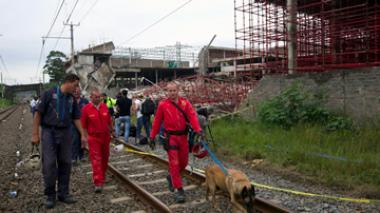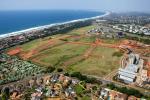Unqualified construction workers blamed for Tongaat Mall collapse
 The dangers posed by incompetent and unqualified personnel who handled Tongaat Mall construction in Durban were highlighted on Wednesday during the proceedings of the Commissions Inquiry.
The dangers posed by incompetent and unqualified personnel who handled Tongaat Mall construction in Durban were highlighted on Wednesday during the proceedings of the Commissions Inquiry.
The dangers posed by incompetent and unqualified personnel who handled Tongaat Mall construction in Durban were highlighted on Wednesday during the proceedings of the Commissions Inquiry.
The doomed shopping mall had unqualified foremen, sub-standard beams and a sagging slab, an inquiry heard yesterday.
Testifying at a Section 32 hearing, building foreman Ronnie Pillay said his appointment by Durban businessman Jay Singh was based on his 14 years of experience in construction.
Brickworks foreman Prashalen Gounder was unqualified and unable to answer questions on the dimensions of a brick.
Construction regulations, as explained by the inquiry's commissioner Phumudzo Maphaha, stipulate that a competent worker should have qualifications, formal training and experience.
Pillay maintained that he was competent, but said Singh was responsible for the project. The commission heard that instructions, including one to continue working despite a court order to stop, came from Singh.
Singh's son, Ravi Jagadasan, of Rectangle Property Investments, was the developer, and Gralio Precast was owned by Singh's former wife, Shireen Annamalay.
Section 32 hearings are instituted against parties whose alleged negligence results in the injury or death of workers.
Two construction workers were killed and 29 others injured when the unfinished mall collapsed in November last year.
Pillay told the commission that he noticed a sagging concrete slab, which he brought to the attention of site engineer Andre Ballack.
He said Ballack instructed him to build two beams under the slab.
Pillay said that section of the mall collapsed because the supporting columns were not big enough, an issue he raised with Singh. He said he was told that Ballack had said they were sufficient. During cross-examination Ballack's attorney, Richard Hoal, asked Pillay if 19 steel bars had been inserted in the supporting beams, as stipulated.
Pillay said he could not answer because a subcontractor had inserted the bars.
But Maphaha said he had visited the site and did not see "more than 10 bars" in the collapsed beams.
Pillay testified that Singh instructed him to continue work after eThekwini Municipality won a court order to stop all construction on site.
The municipality last year had tried several times to stop the construction because the developer had not applied for permission to build the mall.
Pillay conceded that the mall collapse could have been avoided if the order had been followed.















